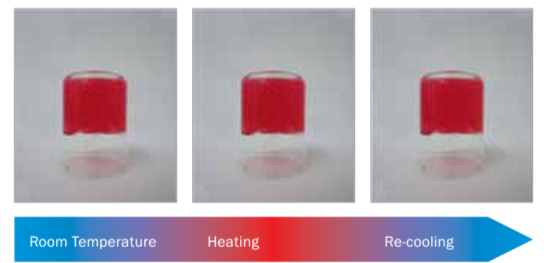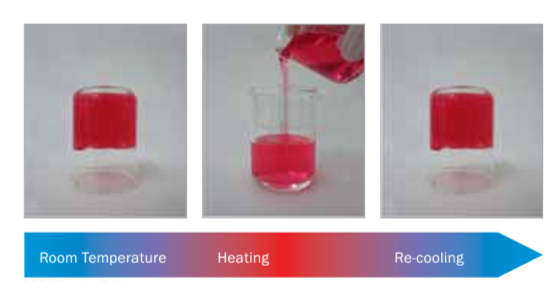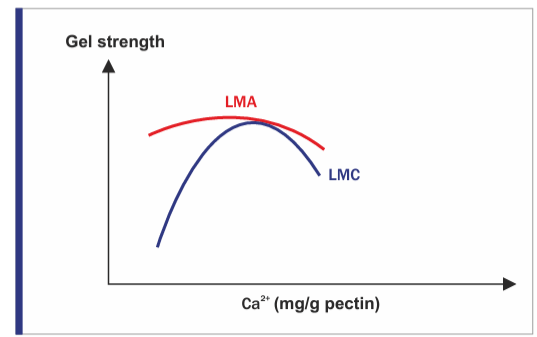Knowde Enhanced TDS
Identification & Functionality
- Chemical Family
- Chemical Name
- Ingredient Name
- Ingredient Origin
- CASE Ingredients Functions
- Industrial Additives Functions
- CAS No.
- 9000-69-5
- Ingredients
- Pectin
- Food Additive Number
- E 440, INS 440
- EC No.
- 232-553-0
- Technologies
Features & Benefits
- Labeling Claims
Applications & Uses
- Applications
- Potential Applications
- Biobased transparent and flexible coating (plasticizer needed) with oil and oxygen barrier.
- Thickener
- Stabilizer
- Gel
Properties
- Appearance
- Light Grey to Light Brown, Powder
- Flavor
- Almost Neutral
- Odor
- Almost Neutral
- Typical Properties
- Physico-Chemical Properties
- Microbiological Values
- Heavy Metals
- Note
*of methanol, ethanol and propane-2-ol, singly or in combination, on a volatile matter-free basis
**after washing with acid and ethanol
| Value | Units | Test Method / Conditions | |
| Viscosity (in 10 % solution) | 536 - 540 | mPas.s | — |
| Value | Units | Test Method / Conditions | |
| pH Value (1 % Solution) | 4.0 - 5.0 | — | — |
| Acid Insoluble Ash | max. 2 | % | — |
| Degree of Amidation | 20 - 24 | % | — |
| Degree of Methoxylation | 21 - 26 | % | — |
| Loss on Drying | max. 12 | % | — |
| Nitrogen Content** | max. 2.5 | % | — |
| Particle Size (Greater than 315 μm) | max. 5 | % | — |
| Polygalacturonic Acid (on the Anhydrous Basis) | min. 65 | % | — |
| Solvent Residues* | max. 1 | % | — |
| Sulphur dioxide Content | max. 10 | mg/kg | — |
| Total Insolubles | max. 3 | % | — |
| Value | Units | Test Method / Conditions | |
| Total Plate Count | max. 1 x 102 | cfu/g | — |
| Yeasts and moulds | max. 1 x 102 | cfu/g | — |
| Value | Units | Test Method / Conditions | |
| Arsenic Content | max. 3 | mg/kg | — |
| Cadmium Content | max. 1 | mg/kg | — |
| Lead Content | max. 2 | mg/kg | — |
| Mercury Content | max. 1 | mg/kg | — |
Regulatory & Compliance
- Certifications & Compliance
Technical Details & Test Data
- JRS Hydrocolloids – Versatile Newcomer Pectins
Versatile Newcomer Pectins
JRS Pectins are natural polymers extracted from the remains of fruit juice production. Because of their high pectin content and abundancy, JRS mostly uses citrus fruit peels.
Pectin chains are rather complex polymers based on a polygalacturonic acid backbone. They are classified according to their degree of methoxylation (DM) and other functional groups.

Pic. 1: LMC and HM gels.

Pic. 2: LMA Pectin Gel.
Generally, two major categories are differentiated. High methoxyl pectins (HM) with a DM higher 50 % and low methoxyl pectins (LM) with DM below 50 %. In the low methoxyl category again two types are distinguished. First, the conventional low methoxyl pectin (LMC), second, the low methoxylated and amidated pectin (LMA), where a proportion of the methyl esters is substituted with amide groups.
JRS Pectin Core Benefits
The core properties of HM and LM pectins are quite different, whereas both LM pectins, LMA and LMC, behave somewhat similar but offer fine tuning opportunities.
The types of HM pectins can act as versatile gelling agents without the need of higher valent ions. They form clear, firm and thermo-irreversible gels, where the setting time and temperature depend on the DM, leaving room for adjustments. Gelation conditions of HM pectins are in the pH range 2-3.8 and also need a soluble solids (SS) content of > 65 % sugar. Given these conditions, the gelation occurs after reaching the setting temperature and needs a certain setting time to finish, varying between rapid (< 2 min), medium rapid and slow set (> 5 min).
In the LM category, gelation of LMC and LMA depend on the addition of higher valent ions like Ca2+ . Additional conditions are a pH 2.6-7 as well as SS of 10-70 % sugar in the solution.
LMA pectins produce shear and thermal reversible gels, which are overall less susceptible to ion reactivity than LMC pectins. Upon higher valent ion addition, conventional low methoxyl pectins result in brittle, thermal irreversible gels.

Graph. 1 : Gel strength of LMA and LMC pectins depending on Ca-ions concentration.
- Preparation
Dissolve with high shear energy, improved solubility in hot water 80-90 °C and/or dry blended with soluble solids.
- Gelation Conditions
Gelation after addition of higher valent ions, e.g. Ca 2+
Storage & Handling
- Shelf Life
- Atleast 2 Years
- Storage
- Store at room temperature in dry conditions. In original and unopened bags, best before at least 2 years starting with production date



